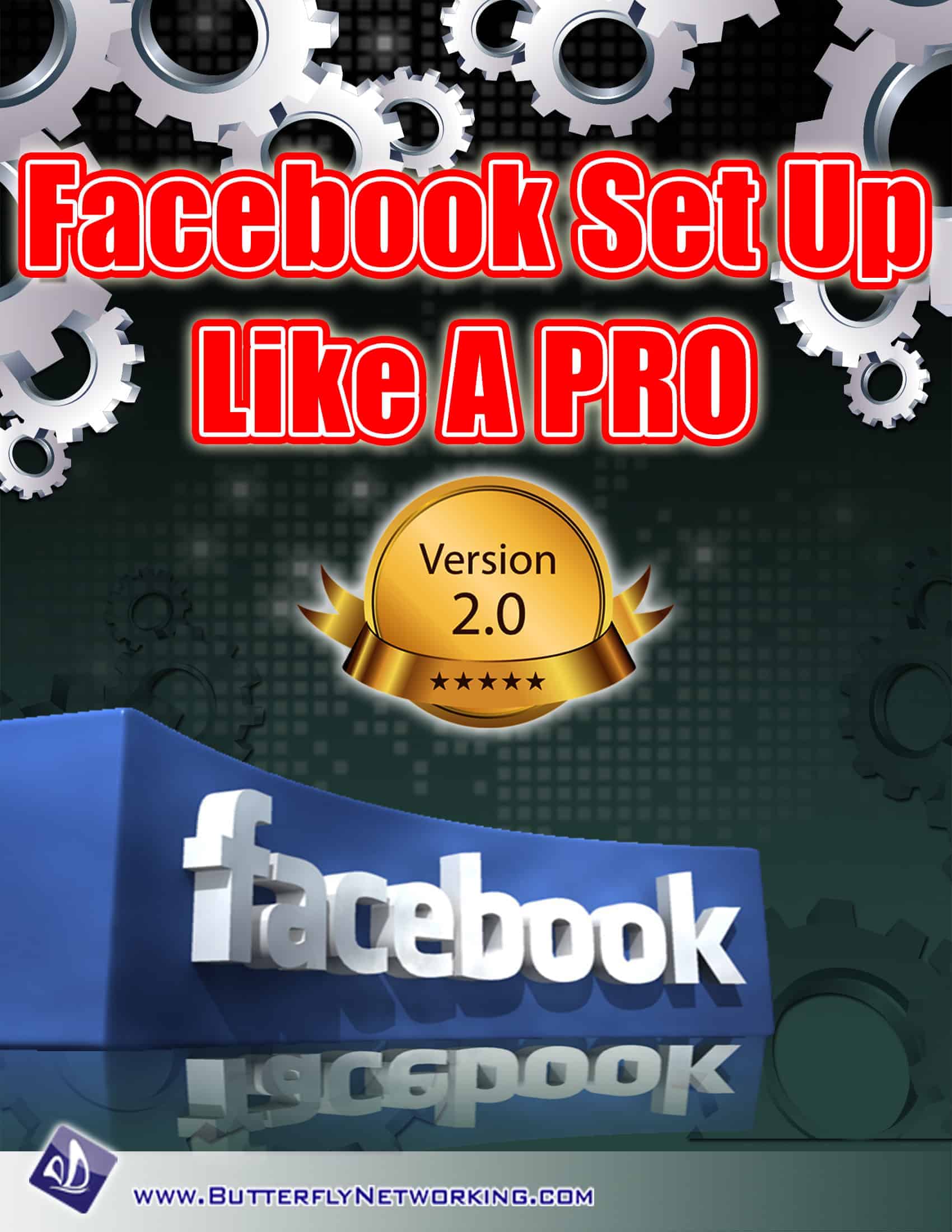Search Results for "email best practices"
Email Best Practices – Information to Protect Your Bottom Line
Posted by: | CommentsEmail best practices to help you protect your business.
Email is a universal tool used by people and organizations everywhere for both personal and business reasons. Emailing is such a critical part of everybody’s life today and though it is highly instrumental in all facets of life, if used inappropriately or incorrectly can be detrimental and even dangerous. The use of emails presents with security risks in the form of viruses and spams that, if not avoided, can cause serious damage to your electronic device and even be quite costly. There are specific guidelines that everyone should familiarize themselves with when utilizing email. Educating yourself and becoming acquainted with such topics as viruses, scams, phishing protection, the simple understanding of how to perform attachments, as well as email etiquette are all important useful topics that users should be remarkably aware of and comfortable with. Let’s take a moment to discuss each here and acquaint ourselves with the how to’s on each of these important topics.
To begin with viruses are very easily spread through emails. We can all avoid viruses by installing a state of the art antivirus software on your electronic device. Continued efforts to avoid contracting a virus on your device is to only open emails from reliable sources that you know and trust as well as being remarkably cautious about the attachments you open. You want to be certain to only open attachments you believe to be safe and if for some reason you are doubtful then get in the practice of scanning attachments with antivirus software before you attempt to open them.
 Spam emails that seem to find their way into our mailboxes are 9 out of 10 times unsolicited emails trying to sell products, or entice users to participate in online programs and are many times internet hoaxes. The best practice here is simply to reduce the amount of spam emails you get by not sharing your email address with every site or every online organization that requests it. You should always be cautious about subscribing to various websites and to accepting email offers that you receive in an effort to always protect your email address.
Spam emails that seem to find their way into our mailboxes are 9 out of 10 times unsolicited emails trying to sell products, or entice users to participate in online programs and are many times internet hoaxes. The best practice here is simply to reduce the amount of spam emails you get by not sharing your email address with every site or every online organization that requests it. You should always be cautious about subscribing to various websites and to accepting email offers that you receive in an effort to always protect your email address.
Phishing attacks are fast becoming a problem with emailing since these scams, with their unsuspicious appearances, are designed to steal personal information about users. Phishing typically involves fake email messages that prompt users to give away their private information, whether passwords, addresses, credit card and bank account numbers, and even individual social security numbers. Consumers should always be 100% cautious above divulging any private information on the net to any email they receive that appears to be remotely suspicious. It is sometimes difficult to detect which emails are scams because they are so cleverly designed with real logos and organization information so err on the side or caution if you have the slightest doubt and do NOT divulge any private information.
Another very important email practice is the proper management of your inbox. Get in the practice of sorting out your messages based on importance, or dates, subject matters and even sender’s names to allow for quick retrieval of the emails going forward. In managing your inbox you should also get in the habit of creating folders for purposes of separating and saving messages you deem important to save.
Finally, email etiquette is something that everyone should learn and use. Using proper personal and business writing at all times with correct spelling, grammar, punctuation, and the use of multiple small paragraphs as opposed to long run on paragraphs will indicate to your readers that they are in receipt of an email from a very detailed and professional individual or organization. Always use eye catching informative subjects as well in an effort to quickly grasp the attention of your recipients.
Take some time to acquaint yourself with these practical email guidelines and enjoy all the positive uses that email presents us with while taking care not to put yourself and your electronic device at risk. Start following these simple guidelines today!!
My mastermind friend PJ Van Hulle runs a great event every year called List-A-Palooza. It’s a FREE way to grow your own email list. If you’re really serious about building your business you need to take a look. Even if your email subscriber list is already over 10,000 there are great strategies and practice advice to be had with List-A-Palooza, and it’s free. Check it out ==> http://clickherenow.co/listapalooza
4 Email Marketing Strategies To Explode Your Client Base
Posted by: | CommentsEmail Marketing Strategies
The success of your online business is highly dependent upon your email marketing strategies. It is important to recognize that in order to build your business, you must build your client base and create unique marketing campaigns, and in order to build a client base, you must develop and build meaningful relationships through loyalty, commitment, and consistent interaction.
1. Creating Your Database: In your efforts to implement best practices and create and develop a good email database, you must put a great deal of focus on compiling pertinent information on your potential customers. It is especially useful to create and deliver successful email campaigns to customers, if, in fact, you have a database of regular customers to share with, and a familiarity with your customers’ likes, preferences, desires, and interests. For this very reason, it is critically important to log and keep track of all your customers’ personal information, including their contact information, and all their past purchasing history with your company. In this way, you are able to generate email campaigns to particular customers who have an interest in a specific product or service campaign based upon their own personal preferences, and their purchasing history.
2. Segment and Personalize: It is especially helpful and important to segment your emails allowing for the distribution of more targeted and personally tailored email messages. Let’s be practical. If you are sending out tailored messages to customers who have a specific interest in the product or service targeted in your email campaign, the odds are greater they will open it. Once open they will actually read it and be responsive as well. Utilizing this simple technique affords you the luxury of creating, maintaining, and enhancing special bonds and connections with all your customers.
 In addition, personalizing your emails comes in at the top of the importance list for marketing strategies. How true it is today that emails that are distributed to mass recipients without any personalization are 9 out of 10 times simply deleted without ever affording them any attention. By personalizing your emails with a customer’s name, you create not only a special bond but interest and intrigue on the part of the recipient who then feels compelled to open the “personal emails.” Sending along personal emails addressing customers by their name, referring to their personal past purchases, and communicating with a friendly tone about current campaigns and product services, will prove to be more beneficial to your campaign and entice more consistent sales.
In addition, personalizing your emails comes in at the top of the importance list for marketing strategies. How true it is today that emails that are distributed to mass recipients without any personalization are 9 out of 10 times simply deleted without ever affording them any attention. By personalizing your emails with a customer’s name, you create not only a special bond but interest and intrigue on the part of the recipient who then feels compelled to open the “personal emails.” Sending along personal emails addressing customers by their name, referring to their personal past purchases, and communicating with a friendly tone about current campaigns and product services, will prove to be more beneficial to your campaign and entice more consistent sales.
3. Engaging and Relevant Content: Engaging the attention of your customers by way of informative content that relates directly to the individual on a personal level, is a sure-fire way of capturing their interest and getting them to actually respond to your call to action within the email. It is helpful to include such marketing gimmicks as coupons, or cash vouchers from time to time that provides the customers with an incentive to want to purchase. Be certain in your communications to not only point out the value of your product or service, and the customers’ benefits but also to present this very information in a compelling style to capture the attention of your audience through this personalized approach.
4. Staying in Touch With Customers: Now that you have created your customer database, have personalized and segmented it, and delivered compelling and interesting content to provoke customers to engage in your call to action, then it only makes sense that you would want to be able to accomplish it over and over again. The best way of increasing your sales and customer commitment is through regular communications. The way to do this is through regular email distribution of newsletters that perhaps contain simple interactive surveys of interest to your customers, or simple updates that introduce new products or re-acquaint customers with already existing products. Keeping in touch with your customers through regular, simplistic email messages will undoubtedly assist in keeping your brand front and center at all times.
I have discovered a tool that can provide you with an unfair advantage. It helps you build your list through Facebook.
INBOXR allows you to grab each user’s Facebook email without the user even having to type it – simply have Inboxr ask to send the fan a coupon, a discount, related information, and when the user responds ‘yes’, INBOXR grabs the users email, adds it to your autoresponder and starts the follow-up process.
Email Marketing Tips To Protect Your Bottom Line
Posted by: | CommentsToday there are many components that come into play in the planning, creation, implementation, and launching of a new online business. One important component that contributes to the success of businesses today lies in company marketing strategies. One strategy that is fast becoming a favorite among most business owners is the use of simple email marketing. Here are some useful email marketing tips to help contribute to the success of your business.
1. Make It Easy To Subscribe
 For many people and businesses today innovative subscription programs are fast becoming one of the most popular marketing gimmicks of choice. Proper implementation of a subscription program provides award winning benefits for both merchants and customers. For the actual business provider, a successful subscription campaign will turn a one-time purchase into a consistent source of revenue while for the subscriber customer there is the overall excitement of getting something extra in return for your loyalty and commitment. However, it is important that email subscription campaigns are incredibly user friendly and mobile friendly as well in this mobile world we live in.
For many people and businesses today innovative subscription programs are fast becoming one of the most popular marketing gimmicks of choice. Proper implementation of a subscription program provides award winning benefits for both merchants and customers. For the actual business provider, a successful subscription campaign will turn a one-time purchase into a consistent source of revenue while for the subscriber customer there is the overall excitement of getting something extra in return for your loyalty and commitment. However, it is important that email subscription campaigns are incredibly user friendly and mobile friendly as well in this mobile world we live in.
2. Let People Know What to Expect
Whenever you elect to use email marketing techniques it is critical to be concise and clear about what the potential customer is required to do, the timeline to do it in, and what they are to gain by doing so. A simple, direct message, with easy to follow instructions is beneficial to everyone and will contribute to the success of the email campaign. If a recipient is not able to easily comprehend the required actions as well as the rewards for their actions, then 9 times out of 10 they will simply delete the email giving no thought to what they might have gained or earned. So be careful to be direct, simple, and concise with your content and by all means do not be wordy since people tend to completely ignore content that is extreme and lengthy.
3. Have a privacy Policy – Make it Available
It is absolutely critical to include a privacy policy with your email marketing in an effort to show your firm commitment to the potential customer’s privacy and to protecting all the personal information. Advise them that their personal information will never be shared with others. Be clear in explaining to them why and how they are receiving the email, either they opted in or perhaps they registered or purchased from you in the past. In addition, assure them of your use of the most state of the art security features. Finally, be certain to offer them a means of unsubscribing if they choose and provide them with an email address where they can send along any comments or concerns.
4. Think Like a Customer When You Write
 One simple piece of advice when creating your email is to simply write in a fashion that you, as a customer, would want to receive and read. Lengthy, wordy emails with complicated content that just run on and on are not beneficial to anybody. Remember at one time or another you were a customer yourself. Remember that content which caught your eye and captured your attention and utilize that same style and format with your potential new customers today.
One simple piece of advice when creating your email is to simply write in a fashion that you, as a customer, would want to receive and read. Lengthy, wordy emails with complicated content that just run on and on are not beneficial to anybody. Remember at one time or another you were a customer yourself. Remember that content which caught your eye and captured your attention and utilize that same style and format with your potential new customers today.
5. Personalize the “From”
Nobody likes to get emails from people they don’t know, however, if a recipient notices an interesting and unique “from” in their email, they are more apt to be curious and remotely interested enough to actually open and read the email. A bland, uninformative “from” is more likely than not to be dismissed or deleted by its recipient. Make it intriguing, interesting, and even playful in an effort to attract attention and keep their interest.
6. Craft Your Email Carefully
As we all know, haste makes waste. Certainly composing and writing your email in a hurry and without proper preliminary thought and structuring is bound to be a complete waste of your time and have little to no positive affect on your recipients. Taking adequate time to collect all your thoughts, know your objectives, familiarize yourself with your audience, and construct content that is both eye and mind appealing, is a sure fire way for your email marketing to be successful. Think before you act!!
7. Be Consistent, It Demonstrates Reliability
Rest assured that consistency is a vital ingredient for success in anything, and surely that applies to your email marketing as well. Most people are oblivious to how important consistency can be. However, it is important to recognize that the more consistent you are, the more people you will reach and the more valuable you and your business become. Your ultimate goal is to connect with as many customers as possible in a given time. It only makes sense that to accomplish that you need to be consistent in your email communications, and be as visible as possible. Your primary objective is to sell your product or service and certainly the use of email marketing can and will help you to achieve that. Clearly, consistent emails are sure to attract the attention of your readers, and if written and presented well, will indeed capture their interest and ultimately result in a happy ending for both you and your new customers.
My mastermind friend PJ Van Hulle runs a great event every year called List-A-Palooza. It’s a FREE way to grow your own email list. If you’re really serious about building your business you need to take a look. Even if your email subscriber list is already over 10,000 there are great strategies and practice advice to be had with List-A-Palooza, and it’s free. Check it out ==> http://clickherenow.co/listapalooza
Treating Pancreatitis in Dogs
Posted by: | CommentsEverything You Need to Know
Ever since its launch, the AMP Project has been surrounded by controversy.
It promises fast page speeds and additional visibility on Google result pages but demands submission to a stripped-down form of HTML.
Essentially, putting your website on a diet to make it more attractive to users.
While there are glowing case studies, for many, the implementation was haphazard and the results confusing.
Leaving the marketing industry with this question:
Is AMP important for SEO?
Today, we delve into whether AMP is worth it by looking at:
While the AMP framework extends beyond AMP pages with Web Stories (a.k.a., AMP Stories), AMP Email, and AMP Ads, these are all in the early stages. I won’t be covering those formats in this article.
What Is AMP?
AMP, formerly known as Accelerated Mobile Pages, are lightweight pages designed to give mobile users a lightning-fast, more engaging experience.
Advertisement
Continue Reading Below
It’s “an open-source HTML framework that provides a straightforward way to create webpages that are fast, smooth-loading and prioritize the user experience above all else.”
Their words, not mine.
For most sites, it involves creating a stripped-down, mobile-optimized AMP copy of existing HTML5 page content.
When such an AMP alternative is available, the user is served the AMP version, over the canonical page.
Not too dissimilar from Facebook Instant Articles or Apple News, which also have the stated goal of making mobile content faster and easier to consume.
The key difference between the formats?
AMP supports the distribution of content on the open web without going through a platform-specific app.
And This Is Where It Gets Political
Let’s start with “open source.”
This is technically true.
The project is backed by WordPress, LinkedIn, Twitter, Pinterest, and Bing, just to name a few.
But Google is the key code contributor and main promoter. So much so that people often refer to it as “Google AMP.”
Advertisement
Continue Reading Below
AMP “prioritizes the user experience” through the enforcement of restrictions on ads and user interface design.
- Limiting CSS to 75KB.
- Limiting JavaScript to 150KB.
- Moving all the fluff out of the critical rendering path.
While these restrictions are already enough to create “webpages that are fast”, it’s not the secret sauce that makes them instant.
Here’s the Rather Technical Part
To achieve the lightning load speed, AMP pages are sent to be hosted on Google’s servers.
This allows Google to cache, preload, and prerender AMP content before a user clicks the link in the search results.
When users click AMP content in Google, it may be displayed in one of two ways.
- Google AMP Viewer: Where the source of the content publisher is displayed at the top, but the URL remains a Google domain.
- Signed exchange (SXG): Which allows the browser to treat the page as if it belongs to your domain. Signed AMP content is delivered in addition to, rather than instead of, regular AMP HTML. Out of the two, Google will prioritize linking to the signed content but only for browsers that support it, which is currently only Chrome, and only for standard results, not top stories carousel. This makes the scope of SXG rather limited.
Overall, by “forking” HTML, pre-rendering AMP content, and giving preferential treatment to AMP pages, Google can influence how websites are built and monetized to shape the internet in its favor.
So it’s unsurprising that all these actions have been criticized by many in the tech and SEO industries as an attempt by Google to exert further control over the web.
Advertisement
Continue Reading Below
Yet despite the condemnation, sites are drawn to AMP as it has some attractive benefits.
Advantages of AMP Pages
There are many potential advantages of AMP depending on your site – including less data consumption, improved server performance, a free CDN, and higher ad viewability.
But I want to focus on the two most commonly realized benefits of AMP for SEO.
Faster Page Load Times
While AMP itself isn’t a ranking factor, speed is.
It is especially for 2021 with core web vitals becoming a ranking factor.
If implemented correctly, the load time improvements are often sizeable.
Google claims the median load time for an AMP page is less than one second. This is well within the core web vital requirements.
Plus, speed often has a run-on effect of a more optimized user experience, witnessed by:
- Lower bounce rates.
- Higher time on site.
- Increased conversion rates.
Advertisement
Continue Reading Below
Additional Visibility in Google Search Results
AMP pages are always accompanied by an enhanced appearance in Google SERPs on mobile.
The Lighting Bolt Icon in Google SERPs
At the most basic level, AMP pages are highlighted with the lightning bolt icon in the Google SERPs.
Some SEOs have argued this designation increases the click-through rate of pages as users will choose AMP results knowing it will lead them to a fast loading page.
While this may result in a marginal increase in select industries, I’ve not seen any statistically relevant data to back up that claim for the mass market.
AMP + Structured Data = More Changes of Getting Rich Results
Secondly, AMP in combination with valid structured data increases the likelihood to appear with a host carousel (shows for courses, movies, recipes, and restaurants) or with rich result features such as headline text and larger-than-thumbnail images.
Advertisement
Continue Reading Below
Although AMP is not compulsory for these enhanced features.
Swipe to Visit
Thirdly, there is an exclusive Swipe to Visit functionality for AMP pages in Google Images on mobile.
When a user has selected an image, they see a preview of the site header, which they can swipe up to visit the source page.
Yet, the main driver of additional visibility is that AMP is a requirement for inclusion in the coveted top stories carousel, with the exception of COVID-19 related content.
Advertisement
Continue Reading Below
But that is set to change in 2021 with the Core Web Vitals update to allow both AMP and non-AMP pages, with ranking focused on-page experience metrics.
And with that announcement many SEOs have begun to wonder if the remaining pros of AMP outweigh the cons.
Disadvantages of AMP
From a Developer’s Perspective
- By design, it is a restrictive framework and will likely always be so in order to deliver on the promised speed.
- It’s an extra burden to implement and subsequently remain valid with the ever-evolving AMP standard. Plugins can give a head start, but they rarely work perfectly out of the box.
- It creates technical debt as both the AMP and canonical pages of the code need to be kept in-sync unless you go all in AMP native.
- Light speed is not guaranteed without the AMP Cache. For sources that link to AMP pages without using an AMP Cache (for example, Twitter), additional performance optimizations are needed for optimal speed.
From a Sales Perspective
- The mere presence of AMP inventory creates complexity as if you implement best practice with separate ad units for accurate reporting, you have double the ad units to manage.
- The framework limits ad features. Notably, AMP doesn’t support “disruptive” ads, such as interstitials or expandables, and direct-sold ads can be complex to implement.
From a Marketer’s Perspective
- It costs double the crawl for one piece of content as Google wants to ensure parity.
- For many publishers, it drives impressions but not necessarily engagement metrics due to the top stories carousel ‘swipe’ functionality encouraging users to read more from other sources.
- It’s an extra burden to optimize. Like a regular page, just because it’s live doesn’t mean it’s SEO-friendly. You will need to partner with your development team to get the most out of AMP.
- Google’s AMP Viewer dilutes brand identity as a Google domain, not the publisher’s, is shown in the address bar. This can be rather confusing for users who have been trained that the URL in the address bar has significance. The fix of showing the actual site at the top of the AMP pages takes up precious space above the fold. Signed exchange is a step in the right direction, but isn’t available for most traffic.
How to Optimize AMP Pages
It’s not always the case that AMP adopters see results rise.
Advertisement
Continue Reading Below
When that’s not the case, there are two potential reasons.
- Either wasn’t the right fit, we come to this in the next section.
- Or it wasn’t implemented thoroughly and correctly. AMP is not often as simple as plugin and play.
So what is involved from an SEO perspective to achieve the visibility boost with AMP?
Outside of stating the obvious that AMP pages should be crawlable and indexable, here are the top optimization actions.
Ensure Discoverability
Add information about the AMP page to the non-AMP page and vice versa, in the form of rel=”amphtml” (on the AMP) and rel=”canonical” (on the non-AMP) versions as <link> tags in the <head>.
SEO-Friendly AMP URLs
There are many ways you could communicate the URL is AMP.
- Parameter: ?amp
- Subdomain: amp.domain.tld
- Front-end language: domain/folder/article.amp.html
- Subfolder: domain/folder/article/amp
Advertisement
Continue Reading Below
The subfolder option is generally the most SEO-friendly and flexible.
This option along with front-end language are also the only two recommended by Google.
Consistent User Interface
While there may need to be minor variations due to AMP restrictions, the user interface and design scheme should be materially similar when looking at AMP vs canonical versions of the same page.
Fully Functional
Personalization and interactive elements such as navigation menu, social media sharing icons, related content, forms, login, and – yes – even ads, should work the same way as the canonical version.
Verify SEO Element Parity
The code behind the scenes, such as hreflang, H1s, alt image text, and especially valid structured data should not only be present but the same on both the canonical and AMP pages as inconsistencies can hinder SEO visibility.
AMP-Friendly Logo
The logos used must meet the AMP guidelines, else it will be displayed poorly or not at all in the top stories carousel.
Don’t Add AMP URLs to XML Sitemap (Unless You’re Native AMP)
Only canonical URLs belong in XML sitemaps.
Advertisement
Continue Reading Below
The rel=”amphtml” provides enough signals for Google to discover the AMP pages.
When a correctly paired AMP page is indexed by Google, it will be the version served to the user.
This is no small effort and leaves many marketers wondering, is AMP worth the effort?
Which Sites Should Implement AMP?
The official AMP website is full of case studies demonstrating the framework’s positive impact on publishers, retailers, and other industries.
On the flip side, there are also scathing articles from industry experts and many case study fails.
The decision on AMP is not clear cut for all sites.
The cliche of “it depends” rings true.
However, there are clear decision factors for the optimal answer.
If your users are primarily from desktop, AMP is not for you.
While AMP pages do work on desktop, they don’t display with rich features and aren’t served from the AMP Cache. As such, both of the main benefits become unavailable.
Advertisement
Continue Reading Below
If you create “newsy” content and are already up and running on AMP, it’s worth keeping it optimized until AMP is no longer the gatekeeper of the top stories carousel.
At which time, check to see whether the top stories results in your sector are dominated by AMP pages or is there evidence non-AMP sites often rank right alongside them, and if so what are the requirements.
Only if conditions are favorable, test the impact of removing AMP (be sure to follow best practices) if your non-AMP pages can achieve the core web vitals requirement of largest contentful paint (LCP) within 2.5 seconds of when the page first starts loading.
For sites that are willing and skilled enough to get below the 2.5-second standard, the potential speed and organic session increases are unlikely to be a convincing case for converting to and/or maintaining AMP.
The time would likely be better invested in other opportunities.
For sites that can’t reach the 2.5-second standard alone, having key landing pages in the standardized solution from AMP can be a fast route for this SEO win.
Advertisement
Continue Reading Below
But check whether the functionality can be implemented with AMP components.
And remember, unless you plan to move the whole site to native AMP, the increased speed is not for all page views, only those who come from distributed sources that support AMP.
For sites that are yet to be developed or those going through a major overhaul such as a redesign or CMS change, ask yourself if native AMP is the best solution to provide all necessary functionality now and in the foreseeable future.
Spoiler alert, the answer is likely no.
Assessing the Impact of AMP
No matter whether you are embracing AMP, abandoning AMP or just an ongoing user, you should measure the true impact it has on user experience and site visibility.
Do this in four steps.
1. Confirm the AMP Code Validates on All Relevant Pages
Spot checking a couple of pages with the AMP Test Tool is a start, but not enough.
Advertisement
Continue Reading Below
Google Search Console has a dedicated AMP status report, alerting you to the reason your AMP URLs aren’t eligible to be indexed (errors) or may not perform in the SERPs (warnings).
2. Verify the Structured Data Parses Correctly
For applicable AMP content types, the Rich Results Test Tool is helpful for one-at-a-time spot checks – be sure to enter the AMP URL, not the canonical.
I find the relevant Enhancement reports in Google Search Console to also be useful, although the articles structured data isn’t covered.
A reputable SEO crawling tool is often the best option for scale.
3. Understand the AMP Drivers of Visibility on Google
In the Google Search Console Performance reports, there are a few dimensions to analyze:
Advertisement
Continue Reading Below
- Search type: Web, Search appearance: AMP non-rich results: This report shows metrics for blue links with lightning bolts.
- Search type: Web, Search appearance: AMP article: It shows metrics for visually decorated search results such as those in carousels or with an image. Do note, these are also counted in rich results, they are not mutually exclusive.
- Search type: Image, Search appearance: AMP on Image result: This shows metrics for images search results hosted on AMP pages within Google Images tab.
- Search type: Video, Search appearance: AMP article: The report shows metrics for video results hosted on AMP pages within Google Videos tab.
- Search type: News, Search appearance: AMP article: Shows metrics for AMP pages within Google News tab in search results, not the Google News app.
- Discover, Discover appearance: AMP article: This shows metrics for AMP pages within Google Discover.
When analyzing the data, remember that filtering by search appearance will aggregate data by page rather than by property in the table only and be limited to the dimensions available.
Data in the graph will still be grouped by property.
This can lead to some large discrepancies on the image, video, and news tabs.
4. Understand the Drivers & Performance of AMP Sessions
Search Console only shows the Google side of the picture, you can get many more insights from Google Analytics.
But before Google Analytics can be trusted to accurately report on AMP, you must implement “sessions stitching.”
Ensure your Google Analytics setup utilizes client IDs to unify sessions across AMP & Non-AMP versions.
Also, double-check event tracking or other such conversion integrations are firing correctly on AMP pages.
Then you can delve into the number of sessions, conversions, and other KPIs driven by AMP by filtering by data source as a secondary dimension.
Advertisement
Continue Reading Below
Some sessions may come from unexpected sources until you understand how various platforms link AMP.
Common sources and their explanations in relation to AMP sessions, excluding manual UTM tags:
While UTM tagging your own social posts and on-site share buttons can help clear up some of this confusion, there will always be some extraneous sources outside of Google properties, but they are unlikely to be significant.
What is often most actionable is to understand the impact on user experience KPIs such as bounce rates, pages per session, or conversion rate.
Be sure to compare apples to apples.
This entails creating a custom report to compare AMP (identified by the data source) to closest corresponding non-AMP (generally, device as mobile and source / medium as google / organic and regex landing path to all pages types have an AMP version) rather than the overall site performance.
Advertisement
Continue Reading Below
To Sum Things Up
AMP’s reception and case study outcomes have been a mixed bag.
What’s clear is that many publishers have been enjoying the AMP exclusive placement of the top stories carousel.
But as this feature is opened up to those who meet the page experience requirements, it’s likely the benefit of AMP for visibility will be much reduced. So much so, it may be hard to argue a case for it.
So that leaves us with speed – which will become even more important as Core Web Vitals become an SEO ranking factor.
If your mobile site is able to achieve a 2.5-second LCP for key landing pages, you’re unlikely to see a return on resource investment with AMP.
If hitting 2.5 seconds is not possible, supporting AMP for key landing pages is something to consider especially if you have a significant portion of mobile google / organic sessions that can subsequently enjoy the benefit of the AMP Cache prerendering.
via AMP & SEO: Everything You Need to Know via @jes_scholz
How to Recognize Social Phishing Attacks
Posted by: | CommentsWhat is social phishing?
Described by Microsoft, a type of malicious online identity theft. Social media phishing has jumped to 20% of the top-ten most phished brands! According to Andrew Geiger of RiskIQ https://www.riskiq.com/blog/
The hackers/phishers want you to provide them with access to your confidential information.
Social phishing is often seen on Facebook and luckily it normally has a very simple solution. You simply need to change your password to one of those long ugly ones. When changing your password it is best to follow the same requirements as your bank.
A strong password has:
1. at least 11 – 15 characters
2. uppercase letters
3. lowercase letters
4. numbers
5. symbols, such as ` ! ” ? $? % ^ & * ( ) _ – + = { [ } ] : ; @ ‘ ~ # | \ < , > . ? /
Here are some of the sneaky tricks the hacksters use;
1) Fake Websites
If in doubt check the URL in the box at the top of your screen
http://12.34.56.78/
Take a look at the website link above, normally when you go to your best shopping site you will not see those numbers at the very beginning, you would normally see only Amazon, eBay, Nordstrom, etc. This is a very big clue that something isn’t right. Whenever you get that feeling that something isn’t right, take a peek at the website link and make sure it looks right.
Some, however, are not that obvious, it could be a .co instead of a .com.
There could be other words added to the website link http://YOURbestshoppingsite.
It could even be http://best.shopping.site.com
Each and every time something is added the URL, even if it is just a period it makes it different. This is something you need to look out for.
2) Harvesting Information
 You find something interesting on in your newsfeed, click the link, but lo and behold it takes you somewhere you didn’t expect to go. In fact, where you ended up is asking you to enter your email address. Example: you want to go look at a resource mentioned in a blog post when you click on it and it takes you to a link shortening site. (this is what just happened to me) You will be surprised how many people actually enter their name and email address.
You find something interesting on in your newsfeed, click the link, but lo and behold it takes you somewhere you didn’t expect to go. In fact, where you ended up is asking you to enter your email address. Example: you want to go look at a resource mentioned in a blog post when you click on it and it takes you to a link shortening site. (this is what just happened to me) You will be surprised how many people actually enter their name and email address.
3) Fake accounts
This has become very prevalent on Twitter. Scammers are creating Twitter accounts that look like customer service accounts. They want you to enter information regarding your account so they can gain access. Remember most companies will NOT want you to enter any account information in an unsecured environment.
I receive Facebook friend requests daily from “older gentlemen”. I do look at some of the requests, but only if they are already a friend to some of my friends. Many of these accounts are fake and if you do become friends sooner or later they will attempt to get money from you.
4) Cash grabs
This is usually in the form of an email which contains explicit or suggestive text, implying that someone is watching you through your web camera and will publish embarrassing footage taken of you unless you pay them. They are usually poorly written with many spelling and grammatical errors—this is typical of phishing emails. These malicious emails are not directed at anyone personally; they are sent in bulk in the hope that some will reply or comply with the demand for payment.
5) Hidden charges
Clickbait “(on the Internet) content whose main purpose is to attract attention and encourage visitors to click on a link to a particular web page.”
There are many reasons for using click bait, the dangerous ones have hidden charges. An example you find an ad on Facebook that intrigues you, you click. Unfortunately, even though click-baiting is very annoying, it works. Once you have clicked you discover a free offer, BUT you have to pay shipping charges. You still believe this is a good deal so you go ahead. If you are not SUPER careful you just may have signed up for a monthly program at the highly inflated regular price.
How do you stop yourself from falling for these ones? The answer is to be careful. Your first line of defense is awareness and now you have read this information you are definitely aware. Second is to review the web page(s) in detail, definitely look hard for a little box that may already have the tick mark. (or visa versa) When you are aware you’re about to go down the clickbait trail it’s much easier to keep an eye out for the deceptive practices.
I know of one man who purchased vitamins from a “free trial” offer and the company ended up charging his credit card over $200. He reported them to his credit card company and the charges were reversed, but it was still a fair amount of work on his part!

6) Hidden URLs
Link shorteners are everywhere! They are used for a number of reasons such as shortening a long ugly link, tracking how many time the link was clicked, provide users useful features, promote sharing and even to cover up an affiliate link so that scammers won’t steal commissions.
how can you tell if the URL is safe? Use this website to check it first before you click.
http://linkpeelr.appspot.com/
I personally use a program called WebRoot, it was recommended to me by the gentleman who takes care of my computer hardware. For $45.00 per year for 3 devices it is well worth it. If and when you get hacked finding someone who is willing and able to fix your computer without charging an arm and a leg is challenging, better to protect yourself right from the start.














